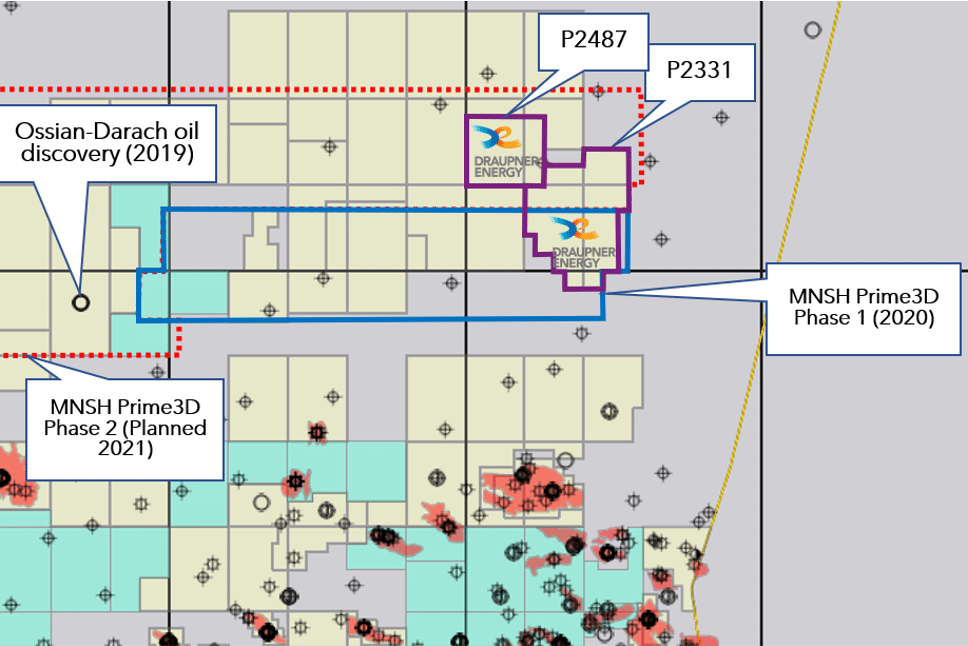A Zechstein oil discovery in the nearby Ossian-Darach well, an onshore find (West Newton), Shell farming in to another Zechstein prospect and further proof of a mature Zechstein source rock have recently added gravity to the hydrocarbon potential of the Mid North Sea High.
Although the area was the target of the first generation of exploration wells – where do you drill, on a high! – the results of those early holes proved disappointing. But it is too early to discard the area on that basis alone, because the ingredients of a working petroleum system are present. It is for this very reason that this year a 3D seismic survey was acquired in the exact area where Draupner Energy’s Balvenie and Durham prospects are located.
The prospects are two Zechstein Hauptdolomit targets mapped and extensively studied by the Draupner Energy team.
“A Balvenie combined oil and gas case with a 35 m oil column results in a mean recoverable oil potential of 385 MMbbls. However, volumetric constraints from Carboniferous and Permian oil source rocks makes a 100-200 MMbbls potential a more likely scenario.”
Mapping intra-Zechstein reflections
It was the availability of the OGA-funded 2D seismic dataset over the Mid North Sea High, in combination with calibrated vintage data that made it easier to map intra-Zechstein structuration. Prospectivity is believed to mainly reside in the 40-65 m thick Hauptdolomit, which is a Zechstein 2 platform carbonate deposited on top of the Zechstein 1 anhydrite platform.
Where developed as high-energy platform facies, the Hauptdolomit has a net reservoir thickness of 25-40 m, average porosity of 17-22 % and an average permeability of ca. 50 mD. Locally, the permeability is enhanced by fractures.

Why Zechstein reservoirs?
The Mid North Sea High is an area where the classic Southern North Sea reservoirs of the Upper Carboniferous and Upper Permian are largely absent, leaving the most likely targets for hydrocarbon exploration the Zechstein, the Lower Carboniferous and the underlying Devonian.
Trap and source
Based on the data so far being available – with the 3D data soon to add to this – the mapped prospects mostly form 4-way dip closures.
As mentioned above, in addition to the presence of a Lower Carboniferous gas kitchen to the south of the prospects, it is the recent oil finds that have further strengthened the case for a possibility of oil.
No valid traps drilled south of licence
With the main source rock for hydrocarbons located to the south of the licence, a rigorous dry hole analysis was performed of the wells that are situated between the kitchen and the prospect. It turned out that none of those wells were drilled on 4-way dip closures, although gas and oil shows in these wells do support hydrocarbon migration. The exception is well 44/7-1, which discovered approximately 34 BCF of gas in the Permo-Carboniferous and a meter of oil in the overlying Zechstein dolomites.
Charge main issue in the north
North of the licences, a number of wells was drilled that did not show a trap either, but a few did. The main reason for the latter wells to be dry seems a lack of charge and the presence of a migration shadow.
Next steps
With the next step being the interpretation of the 3D seismic dataset and the acquisition of more next year, it is hoped that the years of work leading to this are going to be paid off by positive drilling results in the near future.
HENK KOMBRINK




